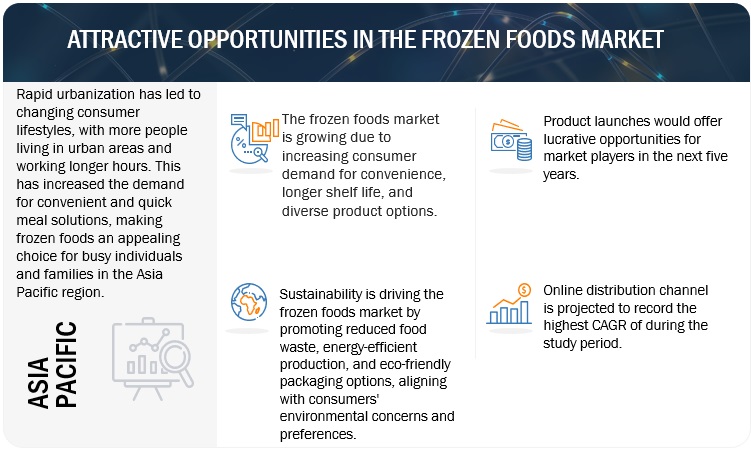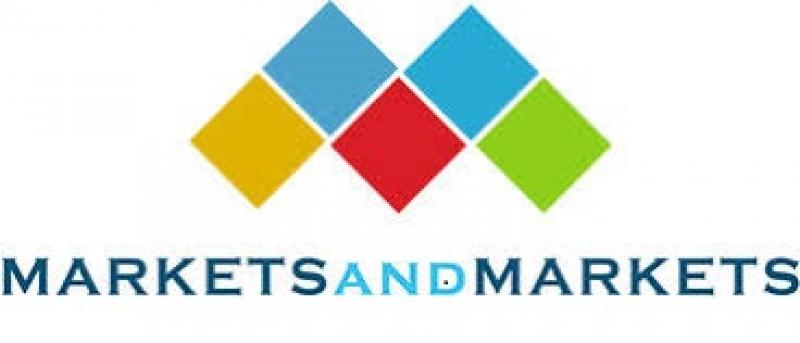Rising Preference for Fresh and Natural Food Products Drives the Frozen Food Market
The frozen food market is estimated to account for about USD 219.9 billion in 2018 and is projected to reach a value of about USD 282.5 billion by 2023, at a CAGR of 5.1%. Developments in the retail landscape, rising demand for convenience food, and technological advancements in the cold chain market are the major driving factors for the market. On the other hand, the rising preference for fresh and natural food products is a restraining factor for the frozen food market.
Report Objectives:
- To define, segment, and project the global market size for frozen food
- To understand the structure of the frozen food market by identifying its various subsegments
- To provide detailed information about the key factors influencing the growth of the market (drivers, restraints, opportunities, and industry-specific challenges)
- To analyze the micromarkets, with respect to individual growth trends, future prospects, and their contributions to the total market
- To project the size of the market and its submarkets, in terms of value, with respect to regions (along with their respective key countries)
- To profile key players and comprehensively analyze their core competencies
- To understand the competitive landscape and identify major growth strategies adopted by players across key regions
- To analyze the competitive developments such as expansions & investments, new product launches, mergers & acquisitions, joint ventures, and agreements

Download PDF Brochure: https://www.marketsandmarkets.com/pdfdownloadNew.asp?id=130
By product, the convenience food & ready meals segment is estimated to account for the largest share in the frozen food market in 2018.
On the basis of product, the convenience food & ready meals segment is estimated to dominate the frozen food market in 2018. This is due to the increasing consumer preference toward convenience foods, which indirectly favors the increasing demand for frozen products, as they require less time and efforts. The processed food market is driven by the greater need for convenience due to the busy lifestyles of consumers. This, in turn, increases the demand for frozen products. Increasing disposable income is also one such factor that had a huge influence on the growth of the frozen food market, as it increases the buying power of the consumers.
The frozen food market is witnessing strong growth due to the developments in the retail landscape.
The development of retail channels in the form of supermarkets, hypermarkets, and convenience stores has driven the growth of the frozen food market. These large food chains form a significant growing outlet for frozen food products, owing to the latest trend of on-the-go consumption. With this, the supermarkets are also able to capture their share in the frozen bakery food market, as a result of the increasing demand for exotic vegetables and fruits and in-house bakers. This trend is driving the frozen food market, especially the frozen bread market.
Speak to Analyst: https://www.marketsandmarkets.com/speaktoanalystNew.asp?id=130
Europe is estimated to dominate the frozen food market in 2018.
Europe is estimated to account for the largest market share in the frozen food market in 2018. The region is projected to offer huge growth potential to the frozen food market. The market in Germany is estimated to be the major contributor to the growth in the region. The European market is driven by the robust growth of the food industry, which has supported the ready-to-eat snack food industry to gain acceleration in this market.
This report includes a study of marketing and development strategies, along with the product portfolios of the leading companies in the frozen food market. It includes the profiles of the leading companies such as General Mills Inc (US), Conagra Brands, Inc. (US), Grupo Bimbo S.A.B. de C.V. (Mexico), Nestle SA (Switzerland), Unilever (Netherlands), Kellogg Company (US), McCain Foods Limited (Canada), Kraft Heinz Company (US), Associated British Foods plc (UK), Ajinomoto (Japan), Vandemoortele NV (Belgium), Lantmannen Unibake International (Denmark).
Recent Developments:
- In June 2018, Lantmännen Unibake opened up a new production plant in Nowa Sól, Poland to increase its production capabilities.
- In October 2018, Conagra acquired Pinnacle Foods Inc. (US); the acquisition helped Pinnacle foods to widen its frozen meals & snacks and sweet treats categories.
- In September 2018, Grupo Bimbo added four frozen bakery lines to its Argentina plant. This step was taken to increase the export business of the company in neighboring countries such as Chile.
- In November 2018, Nestle launched Wildspace, a range of healthy frozen meals in reusable and recyclable containers. Wildscape meals include six different varieties, such as the gochujang cauliflower with Brussel sprouts, quinoa, chickpeas, pickled onions, riced cauliflower, and cashews.
- In May 2018, Nestlé launched meat-free brand—Garden Gourmet—in the UK. Garden Gourmet offers healthy meat-free products and is expected to strengthen the frozen ready meals segment in the UK.
